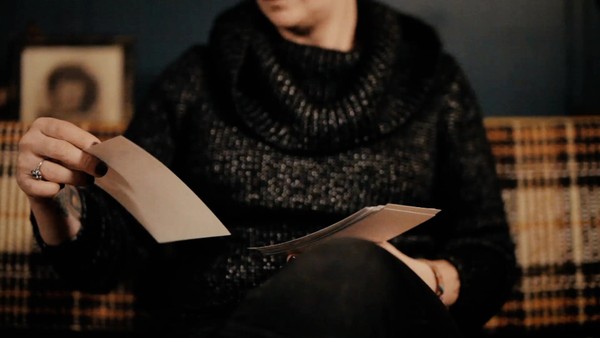PR > PR: Sectors
TACKLE CAN WAIT
FINGERPAINT, Saratoga Springs / CONCUSSION LEGACY FOUNDATION / 2020

Overview
Credits
OVERVIEW
Why is this work relevant for PR?
American football is a time-honored tradition, and a formative part of countless childhoods, but it doesn’t come without its dangers. The Tackle Can Wait campaign was designed to drive home the message that youth tackle football is incredibly dangerous to the developing brain, and the damage it causes is easily preventable. The pro bono campaign was an initiative led by two daughters who both lost their fathers to CTE, Rebecca Carpenter and Fingerpaint employee Angela Harrison, and former NFL player Chris Borland. The PSA demonstrates the dangers of tackle football before age 14 in a controversial way to start conversations.
Background
Playing contact sports, especially football, often results in repeated hits. Each one causes brain trauma, even if it doesn’t cause a concussion. And these repetitive hits add up to long-term risk for the debilitating, deadly brain disease chronic traumatic encephalopathy (CTE). This is especially concerning for young people because the earlier they start playing tackle football, the longer they will experience repetitive hits, which increases their risk for CTE. Fingerpaint employee Angela Harrison lost her father to CTE and reached out to the Concussion Legacy Foundation to work together to develop a pro bono campaign that would highlight the dangers of youth tackle football by comparing the risks to that of smoking cigarettes, noting over time a child’s risk of developing CTE from tackle may add up faster than a smoker’s risk of developing lung cancer.
Describe the creative idea
After findings of a study on the dangers of CTE were published in the Annals of Neurology medical journal, Rebecca Carpenter, Fingerpaint employee Angela Harrison, and former NFL player Chris Borland were shocked to hear the strong correlation between starting tackle football at a young age and the development of CTE—a stronger correlation, in fact, than that between smoking and developing lung cancer over time. The creative and controversial PSA was created to highlight this in a way that would get people talking. After a long football practice, children are taken off the field for a huddle break where they are handed cigarettes by their parents and coaches. As the kids catch their breath and puff away, the PSA describes the dangers of youth tackle football, comparing it to smoking and noting the younger you start, the longer you are exposed to the dangers.
Describe the PR strategy
The Tackle Can Wait campaign illustrated, in vivid fashion, the dangers of kids playing youth tackle football. The campaign was created based off the findings of a study published in the Annals of Neurology medical journal, which was conducted at Boston University in collaboration with the Concussion Legacy Foundation and concluded that the risk and severity of developing chronic traumatic encephalopathy (CTE) increases with the number of years playing tackle football. Targeting parents and coaches of youth tackle football and leveraging both the report and the PSA, the narrative to the press was parents and coaches are allowing kids to take irreversible risks with their brains and need to wait until age 14 to allow kids to play tackle football.
Describe the PR execution
The website and creative spot launched the day the clinical study was published in the Annals of Neurology. From there, the team executed a local and national news blitz that included the creative director of the project doing live national interviews, as well as getting the project picked up by the Associated Press to syndicate on local channels across the nation. Additionally, the PSA was aired on both broadcast and connected TV. The website, PSA, and social media efforts overwhelmingly performed either at or above benchmark, garnering billions of impressions from hundreds of thousands of users. The provocative PSA started conversations everywhere, raising awareness of the dangers of youth tackle football.
List the results
Media outputs:
The PSA was picked up by the AP for nationwide local coverage, as well as every major national news network. It was covered extensively in print, television, online, and news media. It was most notably featured in:
• The NY Times, Washington Post, USA Today, and many other major newspapers
• ABC, NBC, CBS, FOX; creative director gave a live national interview on HLN
• Network shows like “The Doctors”
• Parenting blogs, including ScaryMommy.com
Target Audience Outcomes:
More than 100 local TV news stations featured the PSA on morning and evening show segments, and most ran full packaged stories on the issue of CTE. Additionally, website traffic in the quarter the PSA was released (Q4) reached a record high, and it became the most-watched video on CLF channels.
Consequently, compared to the previous year, funds raised the month the PSA was released increased by 32%, the average donation amount increased by 52%, and total donations increased by 37%.
Business Outcomes:
Since it first started airing, the Tackle Can Wait PSA has significantly impacted fundraising for the Concussion Legacy Foundation:
• Dollars raised the month the PSA first aired increased 32% over the previous year
• Average donation amounts in the month after the release of the PSA increased 52% compared to the previous year
• Total donations in the quarter after the PSA was released (Q4) increased 37% compared to the previous year
More Entries from Not-for-profit / Charity / Government in PR
24 items
More Entries from FINGERPAINT
24 items





